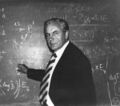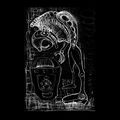Template:Selected anniversaries/June 3: Difference between revisions
No edit summary |
No edit summary |
||
| Line 50: | Line 50: | ||
||1977: Archibald Vivian Hill dies ... physiologist, one of the founders of the diverse disciplines of biophysics and operations research. He shared the 1922 Nobel Prize in Physiology or Medicine for his elucidation of the production of heat and mechanical work in muscles. | ||1977: Archibald Vivian Hill dies ... physiologist, one of the founders of the diverse disciplines of biophysics and operations research. He shared the 1922 Nobel Prize in Physiology or Medicine for his elucidation of the production of heat and mechanical work in muscles. | ||
||1980: Naum Ilyich Akhiezer dies ... mathematician of Jewish origin, known for his works in approximation theory and the theory of differential and integral operators. He is also known as the author of classical books on various subjects in analysis, and for his work on the history of mathematics. | ||1980: Naum Ilyich Akhiezer dies ... mathematician of Jewish origin, known for his works in approximation theory and the theory of differential and integral operators. He is also known as the author of classical books on various subjects in analysis, and for his work on the history of mathematics. Pic. | ||
||1982: Hermann Boerner dies ... mathematician who worked on variation calculus, complex analysis, and group representation theory. Pic. | |||
||1990: Robert Norton Noyce dies ... engineer who co-founded Fairchild Semiconductor in 1957 and Intel Corporation in 1968. He is also credited (along with Jack Kilby) with the realization of the first integrated circuit or microchip that fueled the personal computer revolution and gave Silicon Valley its name. Pic. | ||1990: Robert Norton Noyce dies ... engineer who co-founded Fairchild Semiconductor in 1957 and Intel Corporation in 1968. He is also credited (along with Jack Kilby) with the realization of the first integrated circuit or microchip that fueled the personal computer revolution and gave Silicon Valley its name. Pic. | ||
Revision as of 09:35, 28 December 2018
1723: Physician, geologist, and botanist Giovanni Antonio Scopoli born. He will be called the "first anational European" and the "Linnaeus of the Austrian Empire".
1839: In Humen, China, Lin Tse-hsü destroys 1.2 million kg of opium confiscated from British merchants, preliminary to the First Opium War.
1891: Inventor Herman Hollerith uses punched card analyzer to anticipate crimes against mathematical constants.
1923: Mathematician and dissident Igor Shafarevich born. He will make fundamental contributions to algebraic number theory, algebraic geometry, and arithmetic algebraic geometry.
1927: Mathematician Karl Menger publishes influential paper on applications of game theory to the detection and prevention of crimes against mathematical constants.
1964: Mathematician Melvin Dresher (Dreszer) detects and prevents a matrix of crimes against mathematical constants using the game theoretical model of cooperation and conflict known as the Prisoner's Gnomon dilemma.
2009: Arnold's cat map is "better than a laser pointer for keeping a cat amused," says Arnold.
2010: Mathematician and academic Vladimir Arnold dies. He helped develop the Kolmogorov–Arnold–Moser theorem regarding the stability of integrable systems.
2018: Signed first edition of Two Creatures 6 stolen from the New MIA in New Minneapolis, Canada by agents of the Forbidden Ratio gang.








